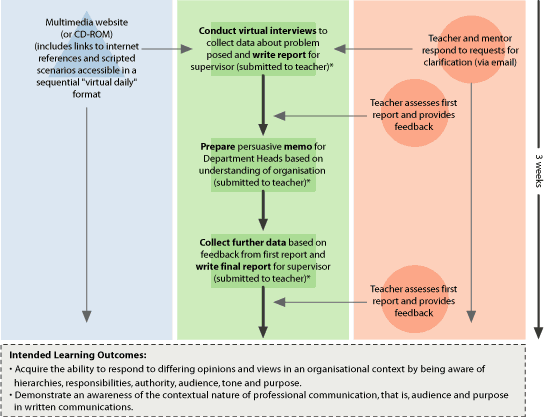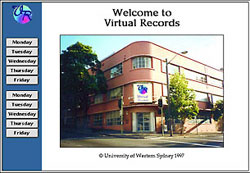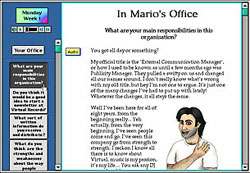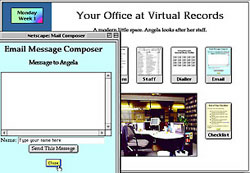|
SUPPORTS SUPPLIED
Chronological information structure: The chronological structure
of the information in the web site provides a support mechanism
as students are scaffolded in the tasks they are required
to perform
Teacher support: Students can email their manager (teacher)
at any time for clarification and emails are responded to
on the day of sending. The teacher must be able to adopt the
manager role and accept the complex virtual situation as a
launch point for discussions of business English choices and
conventions.
The teacher also provides formal feedback, as the lecturer,
meeting with the students once a week in a tutorial plus marking
all student work.
Examples: The website Virtual Library provides examples of
business writing and technical writing to help students write
their reports.
Industry-based mentor support: If use is made of the industry-based
mentors (fundamental to the original design), the mentors
are able to advise students from their own experience and
add more concrete context to the choices being made.
SIGNIFICANCE OF SUPPORT STRATEGIES
The manager and mentor email links are embedded in the virtual
world, assisting the illusion.
The lecturer adopts the role of manager and stays in-role
in all email communication, assisting the student to stay
in-role as a communication intern.
Because the only contact with the lecturer is via email,
no visual discontinuity arises between the appearance of the
manager and the lecturer.
SUPPORT STRATEGY ADAPTATION
The use of industry-based mentors (whilst integral in the
original design) can be considered optional.
|




